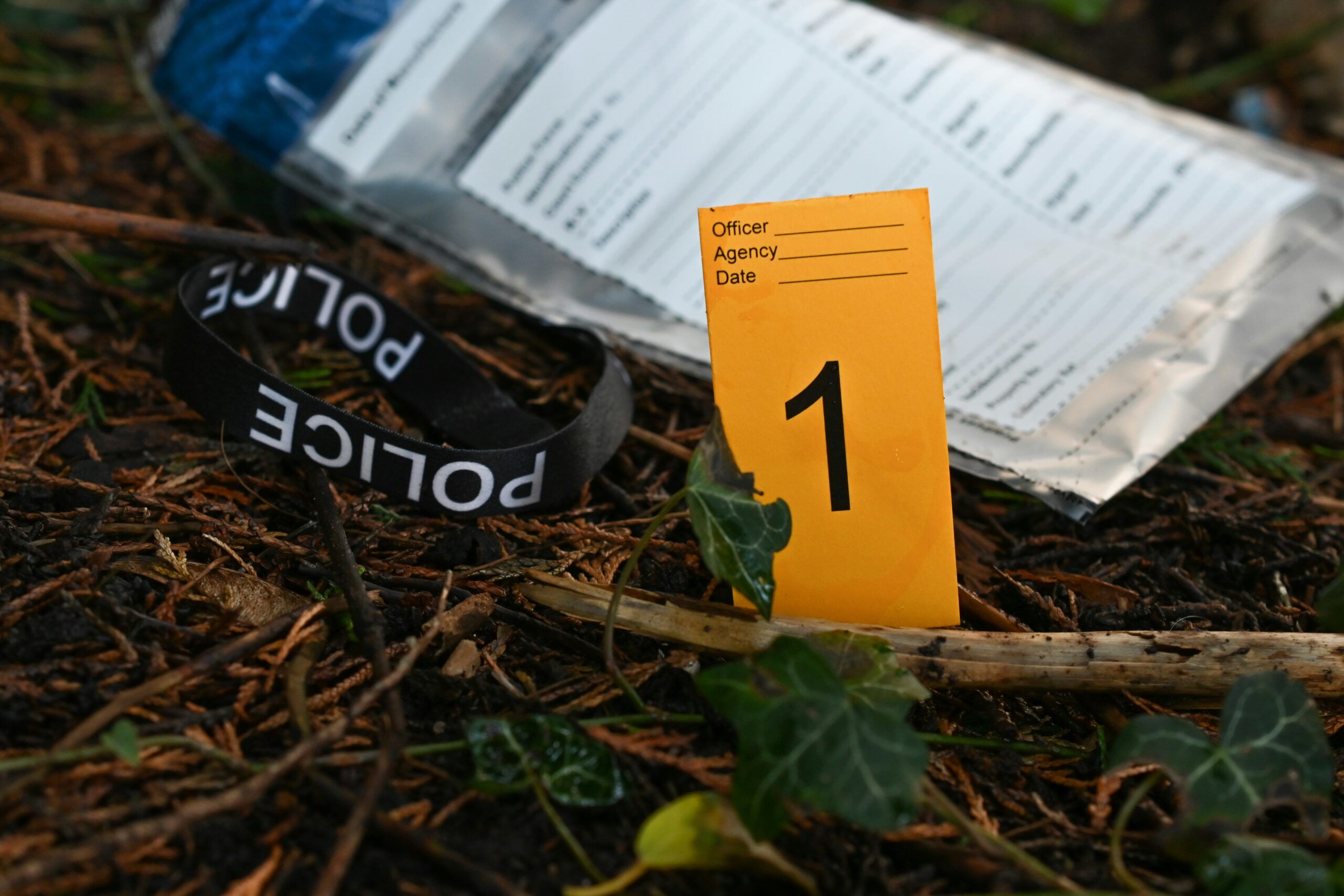In a criminal case, the prosecution bears the burden of proof and must therefore introduce evidence of the defendant’s guilt. But the evidence may travel a long way and be handled by many people before it makes its way into court. How can the jury be sure that the evidence is reliable?
For the defense, the chain of custody offers potential opportunities to challenge and even exclude the evidence from court. If you are facing charges in Kansas or Missouri, you need a criminal defense lawyer who understands why chain of custody is important and how to effectively raise issues concerning it. Turn to the team at Joseph, Hollander & Craft.
What Is the Chain of Custody in a Criminal Case?
When law enforcement officers investigate a crime, they may locate evidence in various places including the crime scene, a private residence, a vehicle, and elsewhere. It is paramount to the defendant’s legal rights, and therefore the criminal case itself, that officers and others who handle the evidence take reasonable steps to avoid tampering with it, losing it, or mislabeling it.
The evidence itself – whether physical evidence like a weapon or intangible evidence like digital records – must travel from where it is found to ultimately end up in the courtroom. In the interim, it may go many places and come in contact with multiple people. Multiple officers may be involved in transporting it to holding for evidence. Another may be tasked with labeling it. The evidence or a sample may need to be tested for fingerprints, DNA, chemicals, or something else and need to travel to an outside laboratory.
The chain of custody is essentially the documentation of such important facts as:
- Who had custody of the evidence in question
- When the individual had control or possession of the evidence
- When and to whom evidence was transferred
- Any analysis or testing performed on the evidence
- The storage and ultimate disposition of the evidence
In other words, the objective of establishing a chain of custody is to show in detail who had control of it so that questions concerning contamination and tampering do not arise. When law enforcement takes the time to carefully document the above and related matters, they can establish with reasonable certainty that the evidence is reliable; but if there are gaps or other problems with the chain, this opens the door to a potential legal challenge from the defendant.
Chain of Custody in Professional and Financial Crime Defense
In a case involving alleged professional misconduct or financial crime, the stakes are high for the defendant. Much of the evidence in such matters is digital or otherwise intangible, which introduces the risk of tampering in a way that simply does not affect physical evidence. Some of the evidence that must be properly documented in the chain of custody includes:
- Electronic data: This broad category can cover cell phone records, text messages, emails, social media content, and various forms of digital information stored on hard drives, laptops, in phones, in cloud accounts, and elsewhere.
- Financial data: Among the various forms of evidence are bank and investment statements, checks, electronic and wire transfers, transactions, evidence of money laundering, and much more.
- Personal data: Included here is anything that definitively links the suspect to the crime in question, such as the use of their name and password, identifying information like an account number or Social Security number, and anything that serves as a digital fingerprint.
Kansas vs. Missouri: Chain of Custody Requirements
Whether in Kansas or Missouri, the basic requirements to maintain a chain of custody are essentially the same. They involve such key steps as:
- Using proper collection methods: When collecting DNA, blood, fingerprint, or other forensic evidence, investigators should use designated kits and trustworthy collection techniques.
- Packaging the evidence: The evidence that is collected, regardless of what form it takes, has to be individually stored in an appropriate container.
- Sealing the evidence: The evidence should be sealed using tamper-indicating evidence tape, heat sealing, tamper-resistant adhesive seals, and other methods.
- Labeling: Packaged evidence is marked with details such as the item number, the name of the law enforcement agency, and other identifying information.
- Testing and analysis: All or a sample of the evidence may need to be tested or analyzed. There are numerous rules for ensuring the testing is done properly.
- Reporting: Reports that are generated from the evidence in question, specifically through testing and analysis, are also subject to various rules.
- Data entry: As a general rule, everything that happens to the evidence – including who has control over it and which tests are performed on it – should be documented with date, time, and location markers and identifying information.
Situations Where Chain of Custody Concerns May Arise
Your defense attorney is going to focus heavily on several potentially problematic areas in which chain of custody issues could arise:
- Improper evidence seizure: When law enforcement actually takes hold of evidence, there is a risk that it could be mishandled, mixed with something else (e.g., a fluid or substance), broken, or contaminated. This is especially the case where numerous different individuals are in possession or control of the evidence.
- Allegations based on forensic or technical material: Tracing evidence back to its source and analyzing its nature is typically complicated work that requires careful handling and a professional who is specially trained to deal with it. The material in question is often technical, and improper handling can risk destruction or alteration of the evidence.
- Delays or inconsistencies in case records: Records that are not updated immediately can raise suspicion, since critical details can be lost if they are not written down right away. Another problem may arise if there is any evidence of inconsistent information regarding the date the evidence was found, stored, moved, examined, or tested.
- Unreliable storage methods: Depending on the evidence, the way in which it is stored could affect its reliability and ultimately its admissibility in court. This is particularly true with DNA and other bodily substances. However, improper storage can raise questions with any type of evidence.
Examples of Breakdowns in the Chain of Custody
There are various ways that the chain of custody can be broken or otherwise compromised in a manner that allows the defense to raise questions about the validity of the evidence. Some examples include:
Mishandling the Evidence
When collecting evidence, investigators should take precaution by using gloves and sterile collection tools, using accepted collection techniques and kits, and avoiding steps that could degrade or commingle the evidence. Investigators who depart from accepted standards and protocols risk jeopardizing the integrity of the evidence.
Packaging, Storage, and Labeling Problems
Certain evidence has to be stored in an appropriate container to avoid problems such as unwanted mold growth and chemical decomposition. The container may need to be airtight or watertight, depending on the evidence in question. Also, steps should be taken to avoid exposure to sun or heat which could degrade the evidence. Finally, each piece of evidence has to be carefully labeled with relevant data to ensure the chain of custody is maintained.
Transfer Delays and Related Problems
When evidence changes hands, the details of the exchange must be carefully and immediately logged. Delays in the time or date of transfer can raise suspicion about possible gaps in the chain of custody. There are also serious problems if someone who is not authorized to view or handle the evidence gains access to it, or the evidence is lost or misplaced (even temporarily).
Law Enforcement and Other Oversights
Numerous individuals are allowed to view evidence, from law enforcement and lab technicians to the prosecution and court staff. When these and other persons do not document the date, time, location, and other details surrounding their handling of the evidence, the defense may raise an objection.
Problems with Digital Evidence
Digital evidence raises its own unique chain of custody issues. For example, merely accessing this data could alter it or at least allow the defense to question whether it has been modified from the original. The data may also be improperly transferred or stored, for instance without adequate encryption or using unsecured drives.
Why Is the Chain of Custody Important?
When the chain of custody is called into question, the entire trajectory of the criminal case can change. A broken chain of custody can lead to:
- Suppressing evidence: If the evidence is unreliable, then our defense can request that it be thrown out or suppressed so the jury will not even consider it. The chain of custody for all pieces of evidence must be scrutinized to identify any items which should be suppressed.
- Establishing reasonable doubt: The prosecution has to prove its case beyond a reasonable doubt. However, doubt can easily arise in the minds of jurors if they are convinced that the evidence, and the prosecution itself, are not trustworthy.
- Altering the narrative: The prosecution usually approaches a case with theories as to the defendant’s motive and how the defendant carried out the crime. If the evidence supporting those theories is undermined, the story has to change. But changing narratives raises doubt with the jury.
- Facilitating pre-trial motions: Questions concerning the chain of custody could support pre-trial motions to suppress evidence, to dismiss charges, to compel the prosecution to turn over certain details, and more. All of these motions could weaken the prosecution’s case even if the matter proceeds to trial.
- Dismissing charges: Where the evidence is especially compromised due to chain of custody matters, a dismissal may be requested. The prosecution could agree or the court could order it upon the defendant’s motion.
How Our Defense Attorneys Challenge Evidence in Criminal Cases
When you retain Joseph, Hollander & Craft to represent you in your criminal matter, we take a careful look at all evidence and how it was handled from the initial investigation to pretrial proceedings and beyond. If the facts allow, we will contest the evidence through a number of techniques and methods:
- Motions: Depending on the nature of the chain of custody problem, we may ask the court to exclude all or part of the evidence. If the evidence is critical to the prosecution, the charges may need to be dismissed.
- Witnesses: Witnesses who can testify about problems with the evidence and the way it was handled in the chain of custody can support the motion. Your criminal defense attorney will also prepare to perform rigorous cross-examination of law enforcement and other prosecution witnesses charged with maintaining the chain of custody. In doing so, we can call into question the prosecution’s case.
- Objections: If your matter goes to trial, we will be prepared with objections to the admission of unreliable evidence as well as testimony and information that are derived from it.
- Counter-evidence and defense witnesses: You also have the right to present your own evidence to contradict the prosecution. We may call expert witnesses such as forensic specialists who can testify about the chain of custody mistakes and how they impact the case.
Why Choose Joseph, Hollander & Craft for Your Defense Team?
State and federal courts have, over the years, addressed chain of custody and related criminal procedure matters. Many of these cases have resulted in tests, rules, and standards which govern the intricacies of some of the most complex evidentiary issues. We are ready to invoke these precedents to support our motions, objections, and other case strategies.
We know your reputation, your freedom, and your future are at stake, so we don’t take our responsibility as criminal defense attorneys lightly. When you retain Joseph, Hollander & Craft, you will have a skilled and seasoned legal advocate in your corner with the experience and tenacity that are necessary to challenge the prosecution’s evidence. Our firm takes a comprehensive approach with each case, thoroughly examining all facts and developing a unique plan to advance your rights and interests.
Contact Our Defense Lawyers in Kansas and Missouri
Have you or a loved one been charged with a crime in Kansas or Missouri? Reach out to Joseph, Hollander & Craft to get started building a robust defense. We maintain offices in Lawrence, Topeka, Wichita, Overland Park, and Kansas City, MO, for your convenience.













